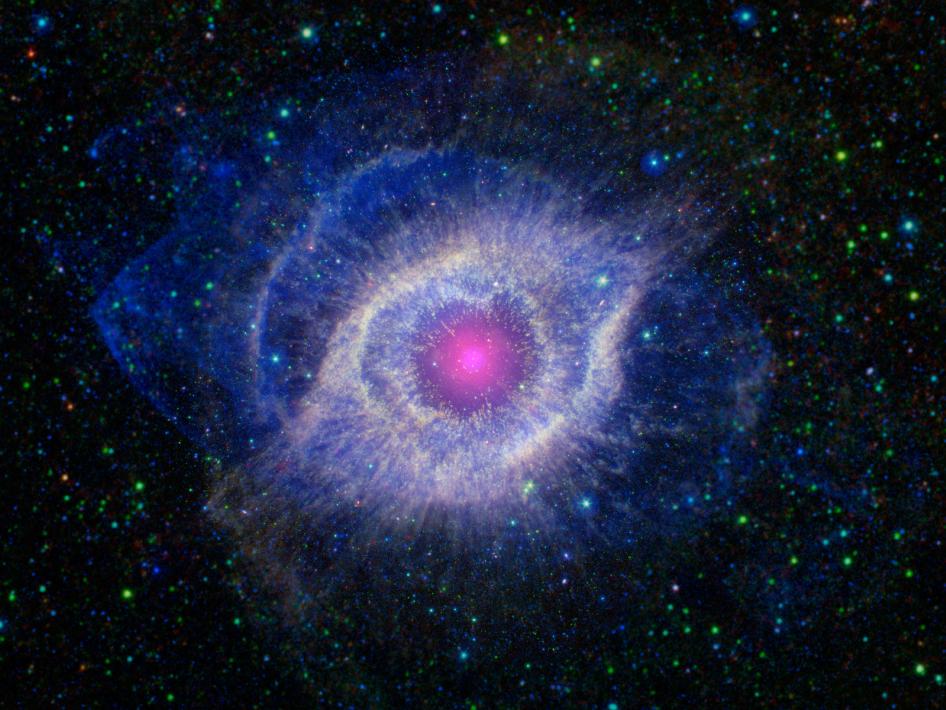Is the Eye of God Nebula “Crying” Water? Kind Of, These Two Studies Say
Spoiler alert: it's not because the nebula just read The Fault in Our Stars. Get it? Stars? Eh?

This is an image–though probably not the recolored one you’re familiar with that opens every episode of Cosmos: A Spacetime Odyssey— of the Helix Nebula, a famous nearby planetary nebula that’s located in the constellation Aquarius and looks like a giant “Eye of God” from certain angles. Oh, and also? It might help to form water in the universe. Apparently that’s sort of a thing that giant dying space clouds can do sometimes.
According to a recent study led by the University of Leiden in the Netherlands, the ultraviolet radiation present in planetary nebulae that exceed temperatures of 100,000 degrees Celsius may contribute to the formation of OH+, a positively charged molecule made up of oxygen and hydrogen that’s necessary for the formation of H2O.
The study, which was recently published in Astronomy and Astrophysics and corroborated by a separate Helix-nebula specific study in the same journal, also suggests that the Helix Nebula is one of those OH+ producing planetary nebulae, given that it burns at 120,000 degrees Celsius.
The dying white dwarf star at the center of the nebula produces dust and gas, including carbon monoxide. Astronomers believe that when that carbon monoxide is hit by the ultraviolet radiation, it loses its oxygen molecules–which are then free to bind with hydrogen molecules also found in the dust, the second study from the Instituto de Ciencia de los Materiales de Madrid notes.
“We think that a critical clue is in the presence of the dense clumps of gas and dust, which are illuminated by UV and X-ray radiation emitted by the hot central star,” said University of Leiden’s Isabel Aleman in a statement from the ESA Hershel Space Observatory. “This high-energy radiation interacts with the clumps to trigger chemical reactions that leads to the formation of the molecules.”
The below GIF demonstrated the frequency and intensity of OH+ production in the nebula:
The scientists from both studies feel that this new information is a good first step to understanding how dying stars like the Helix nebula could possibly contribute to the formation of water in the universe. However, they still haven’t quote pinned down what conditions are necessary for this formation to occur. Might we suggest sitting the nebulae down and making them watch something very sad, like Toy Story 3 or that scene with Artax in The Neverending Story? That’ll form you some H20, for sure.
(via i09, image via NASA, GIF via ESA Hershel)
- StarTalk Radio Announces New Live Dates With Photo of Neil deGrasse Tyson and Bill Nye Being Buds
- Space Station Coffee Is About to Get Better, Will Still Be Made With Pee-Water
- The Very First Vine From Space Captures A Sun That Never Sets
Are you following The Mary Sue on Twitter, Facebook, Tumblr, Instagram, & Google +?
Have a tip we should know? tips@themarysue.com